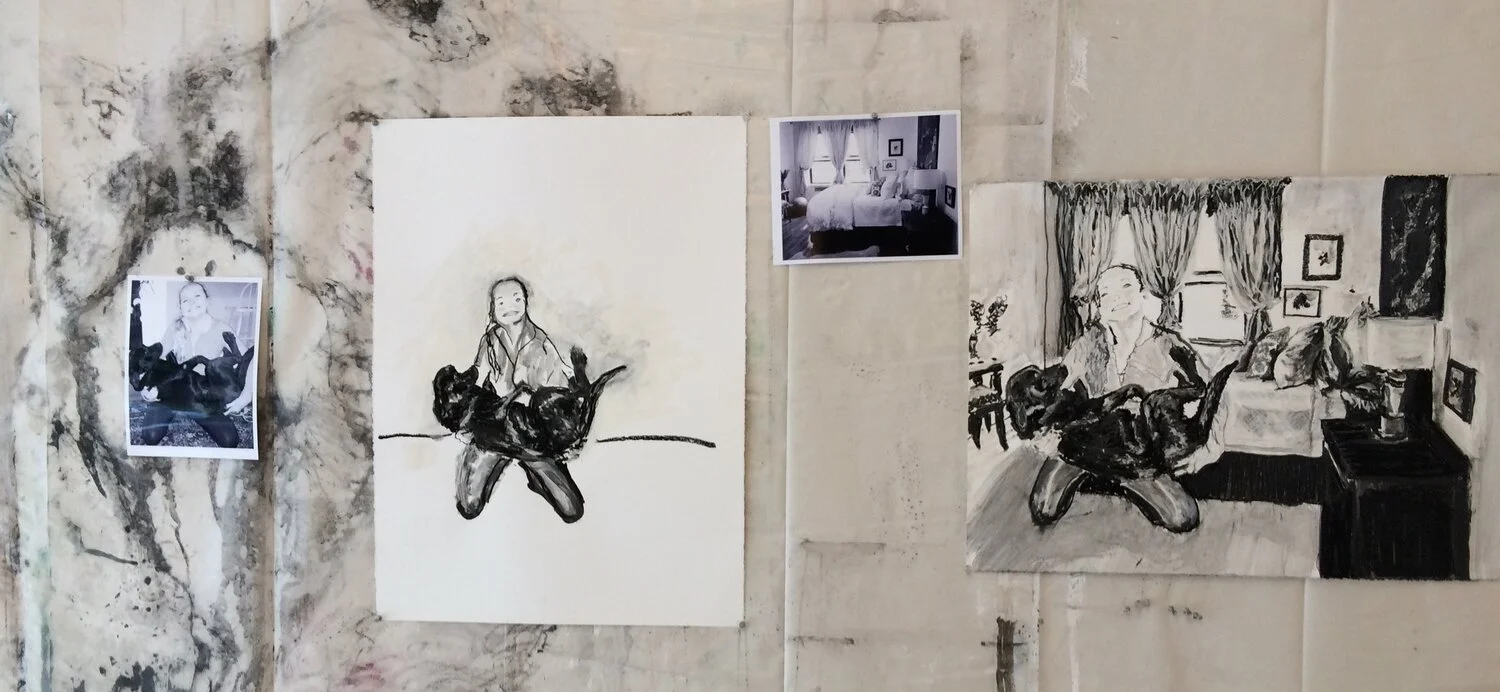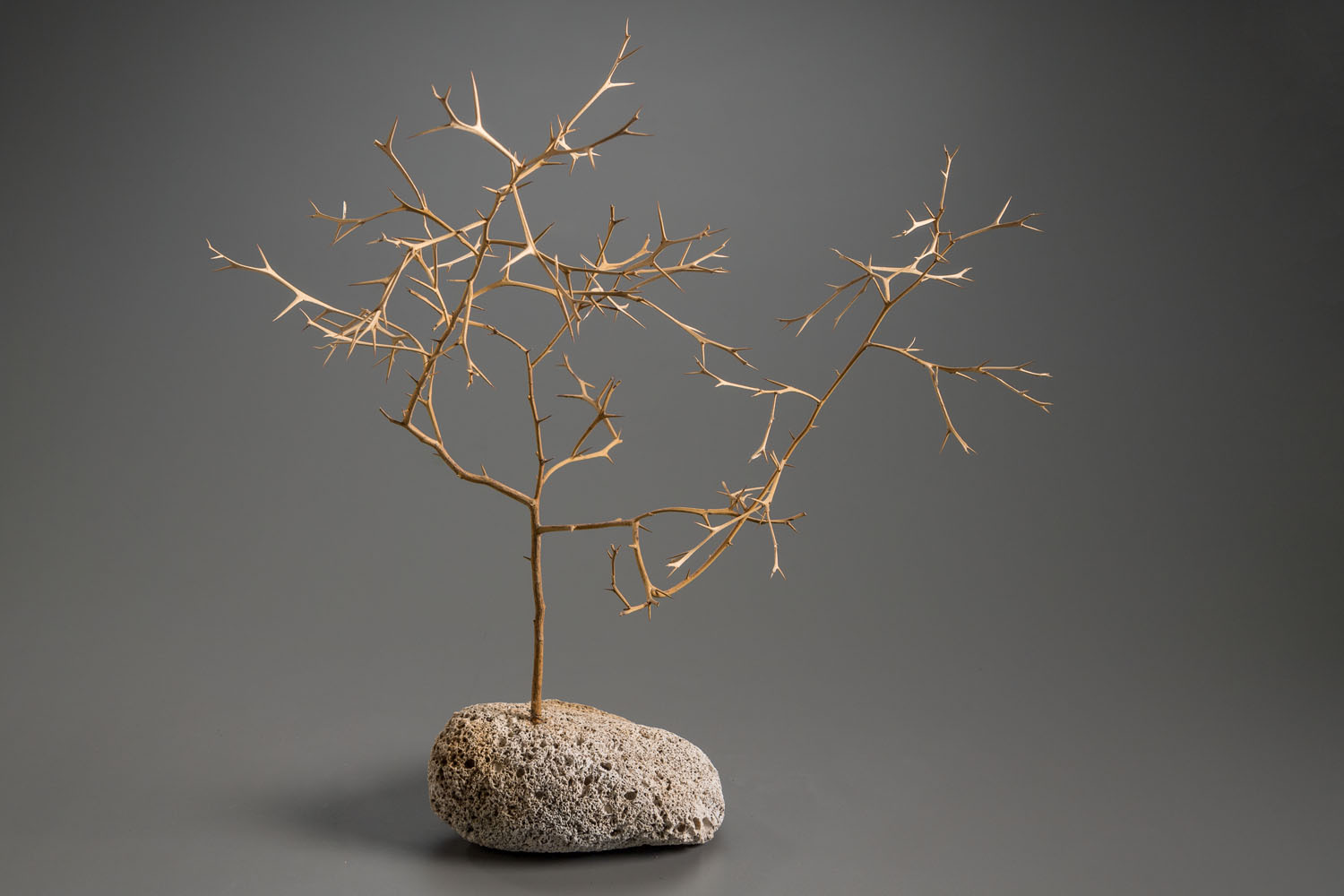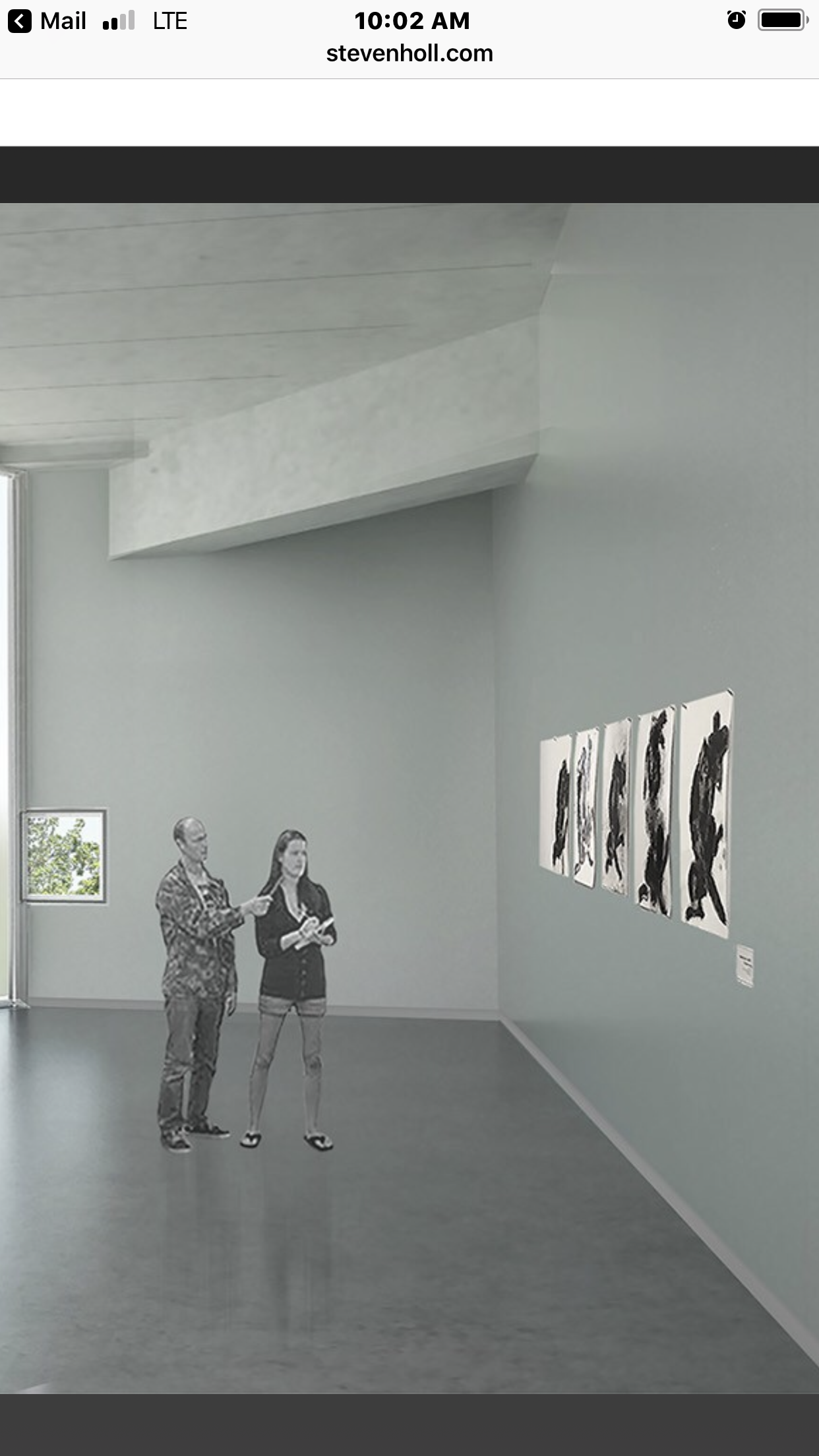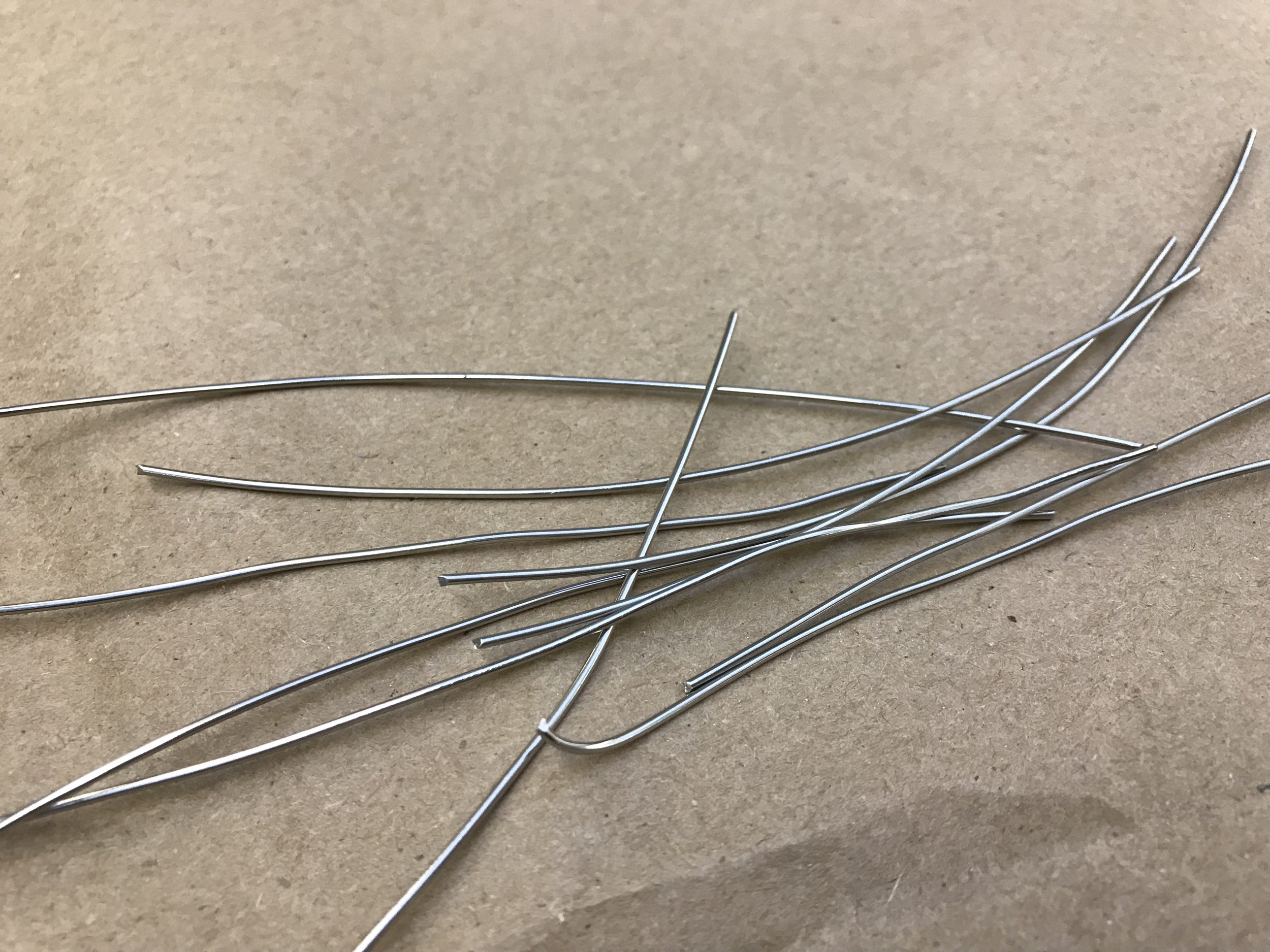Galveston human chain
I am making a human chain for a beautiful home on the beach in Galveston. The home is professionally decorated in very specific neutral whites with shades of grey, beige and a drop of the magenta you find in oysters, sometimes. The sun in Galveston is very bright and veils the room in light which turns most neutrals green.
I did one series last week testing out the colors and sure enough the first three in the series have too much yellow; they look much greener in the room. The last two in the series looked great. My plan is to put a few chains together in different hues and run down to Galveston and see what looks the best in the Galveston Light. In the end having a few variations might workout nicely for a human chain lenticular.
“Score” #22
I am still attaching lath. Today I worked on the left hand and forearm, the face and head. Attaching only enough to give me something to grip the Concrete. Sone of the rebar will be exposed.
left hand
left side of face
right side of the head
looking at this image the head looks weirdly shaped. I will have to love k at that tomorrow.
The shoes-
I have not decided what is the best way to go obiut the shoes. They are crucial for stabilizing the piece.
left foot armature
right foot armatur.
Telephone interview - Airport art in Texas
Friday January 26th I received an email via my website from Gene Fowler. I am horrible with names, I knew his name but could not place it. A quick google and ........he wrote an article in Glasstire that I actually blogged about recently. http://www.cindeeklement.com/blog/2017/11/12/why-are-some-people-ready-why-do-some-people-know-the-moment
You can only imagine the excitement I felt when I put 2 and 2 together.
Screenshot of the email
Below I have pasted the paragraph and a link to article that touched me.
“The title That Day underscores the viewer’s sense of being there beside the photographer and the way in which the captured moment remains ever fresh in the image, some of which were made as early as 1979. That was the year when Dallas-based Wilson began assisting Richard Avedon with his own six-year photography project, In The American West. Describing Avedon’s portraiture process in her 2004 book, Avedon At Work In The American West, Wilson noted that he would wait for what Eudora Welty called “a story teller’s truth… the moment in which people reveal themselves. You have to be ready, in yourself; you have to know the moment when you see it.” “
http://glasstire.com/2017/11/12/laura-wilsons-that-day-pictures-in-the-american-west/
He called me Monday and I rambled on about hats and their truth, their stories and the moment I was ready to hear their stories.
I am sure that he is interviewing several artist regarding their work in the Texas airports. The hope to make the cut.
Faux bois
I received a really nice email from author Gene Fowler with a link to an article that he wrote last year about faux bois.
http://texashighways.com/culture-lifestyle/item/8450-trabajo-rustico
The Nasher Sculpture Center- the term Pareidolia.
We were in Dallas for a very special wedding, and managed to squeeze in the “First Sculpture, handaxe to figure stone” exhibit at the Nasher Sculpture Center. I came away with a new term that applies to my “peace pigeon project.” I was not aware that there was a term for seeing shapes or make pictures out of randomness.
Photo of the museums description of exhibit.
Below are three examples of pareidolia faces in the early handaxes that stood out.
“Broken” - photographs
In early January Nash Baker met me to photograph my latest completed piece. He did a beautiful job. I could not be happier with the photographs? Below are a few of my favorites.
check out Nash’s other work on his website
http://www.nashbaker.com/ or @nashb
Nash checking out the lighting.
“gust” in porcelain
12/27
I pressed out four more, I used some dry yard clippings for some added texture. I forgot to take pictures of the first two. They will all slowly dry under plastic for a few weeks.
Hat collection
It does not matter what country they come from-
When I saw these in Marburger Texas I was moved by the beautiful story each of them holds.
. Woven in felt, every hat tells a story, shaped with memories, recording beliefs, and veiling sorrow, some eloquent and some twisted. Cradled in our imagination, they blow in strange, wonderful ways, spinning from generations that are inhabited by our respect for balancing our present responsibilities and fears. In generations past, in fable and in legend, hats sheltered spirits, represented people and occupations, and defended against the elements.
4 sombreros from the 1850’s each hand sewn and one of them is signed.
I have been working with hats for about four years And had to add these to my collection.
“broken” - Artist statement
In today’s art world an important part of being an artist is writing a good artist statement. Ugh! Writing is and always has been a struggle for me. I have to write, read, rewrite, read, rewrite and ask lots of those close to me to look at what I have written. And after all that I will still have typos and all kinds of grammatical errors. Last fall I worked on my artist statement for “Broken”. I have 3 statements for the piece; the first is less than 200 words, as many calls limit the statement to 200 words, the second is a a bit briefer and the third I will use when I use the piece to address the homeless problem in a more universal context other than just Greece. Here are the latest versions of my statements for “Broken”.
“Broken”193 words
The tone is set at the top. Negligent leadership turns a blind eye to the suffering of its most vulnerable.
Inspired by a vivid memory from my travels in Greece of a refugee/homeless man whose posture had physically changed from a lifetime of panhandling I walked by him several times, he always sat in a recessed doorway of a vacant retail space. The day I cannot forget he was sitting on the ground with his legs crossed, he had fallen asleep. His head had fallen forward and sunk beneath his shoulders. His right arm was out stretched holding a spare change cup. His arm looked impossibly long from many years of stretching it forward, wishful for handouts. In addition, poor financial decisions have left the government/country in faulty fiscal health. This is ironic for a country whose ancient symbol is a wise owl and is considered the cradle of western civilization. Weighing on the abstract figures back will be an owl turning a blind eye to the suffering of its most vulnerable. I will use materials that reflect the white of the ancient ruins and mangled and rusted steel from destroyed barricades left mangled at the Technical university. The piece will be aesthetically raw and broken physically as well as in spirit.
Edited version
“Broken - Greece” 151 words
The tone is set at the top. Negligent leadership turns a blind eye to the suffering of its most vulnerable.
Inspired by a homeless man whose posture had physically changed from a lifetime of panhandling. I remember he was sitting on the ground with his legs crossed; he had fallen asleep. His head had fallen forward and sunk beneath his shoulders. His right arm, impossibly long from many years of stretching forward, wishful for handouts was out stretched holding an empty spare change cup. An owl,once the symbol of ancient Greece, cradle of western civilization, is perched on the figure’s back turning a blind eye as have Greece’s political leaders neglected it’s most vulnerable. The white concrete reflects the white of the Greek ancient ruins; the rusted steel references destroyed barricades left mangled at the Technical university. The piece is raw and broken physically as well as in spirit.
“Broken” 102 words (not specific for Greece)
Society turns a blind eye to the suffering of its most vulnerable.
Inspired by a homeless man whose posture had physically changed from a lifetime of panhandling. I remember he saton the ground with his legs crossed and had fallen asleep. His head had fallen forward and sunk beneath his shoulders. His right arm, impossibly long from many years of stretching it forward, wishful for handouts was outstretched holding an empty cup. An owl,percheson his backindifferent to his circumstances. Constructed from white concrete and mangled wire,the piece is raw and broken physically as well as in spirit.
Wednesday I will meet photographer Nash Baker http://www.nashbaker.com/ to photograph the piece. I can’t wait to see it professionally photographed.
Shake shake shake IV
41st International Watermedia Exhibition: Watercolor Art Society-Houston
I am so happy and so very very lucky to have my piece shake shake shake - chocolate IV accepted.
The exhibition was juried by Iain Stewart. Over 403 pieces were submitted and many fabulous pieces could not accepted so I feel extra fortunate to have to gotten lucky this time.
You are invited to attend the 41st International Exhibition Opening and Awards Reception on Sunday, March 4th at the WAS-H Gallery at 1601 West Alabama Street, Houston, TX 77006 from 3:30pm-5:30pm. A second Art Lovers Reception will be held on Thursday, March 8th from 5:30pm-7:30pmwhich you are invited to attend. Bring your family and friends to meet Iain Stewart if you are unable to attend the Sunday event. from 3:30pm-5:30pm. A second Art Lovers Reception will be held on Thursday, March 8th from 5:30pm-7:30pm.
“score” #21 pruning the armature
the before and after
Before
After
gust
Here is the second piece I will work on this spring . The felt is pretty beat up as I have been using this one to make my “gust” porcelain reliefs.
“Prickly bird”- peace pigeon project
“prickly bird” Peace pigeon project. Fall 2016 I started a project - an experiment with new materials. I made a new sculpture every week, with a different material. My subject the German beak - trumpeter pigeon. He is graceful, interesting and conducive of expressing energy. Picasso drew this same pigeon and called him a the peace dove.
drawings used in the architects renderings
My “happy dog” drawings are used in architectural renderings. On the "Steven Holl Architects" website, under the Glassell School MFAH Architects Renderings, you will find my “happy dog” drawings on the wall of the painting room.
http://www.stevenholl.com/projects/glassell-school-of-art
cropped screen shot the rendering from Steve Holl.com
“Score” #20 lath - what to cover and what not to cover
I will not cover the entire armature in lath as some of the armature will be used to support additional materials to express the energy of the music. I will add these materials after the lath and some after the concrete. Deciding what does and what does not get covered, is crucial in creating the right movement and energy of the piece.
Detail of the chest covered in lath
“gust”
1/19/2018
I am starting two new pieces for my “gust” series.
Here is the first one viewed from every side.
I have two coats of wax on it. Now I need to clean off and wax that is clumpy and make sure it does not loose its shape and character. Then I can begin the molding process to cast it in bronze.
“score” #19 tieing down the lath
The lath is what holds the concrete or plaster to the figure. Concrete liquefies with movement so the lath has to be tied securely, it can not have any play.
The tools
I use a hammer to manipulate the lath and to smash the sharp edges of the cut lath. The pliers are used to tie or twist the ties to secure the lath to the armature. The clippers are used to cut the lath.
Materials
Small piece of cut lath and stainless steel wire.
The Stainless steel is cut into small pieces that is used to tie the lath to the rebar.
Lath tied down with small piece of stainless steel.
The tie is clipped and the sharp end is folded under.
Lath ties to the rebar
“Score” #18 the lath
I know have supports on the ground and I am comfortable that the piece is not going to fall on me. In the end I may cut them off. Right now they stabilize the piece and they are not visually distracting to me.
Now to start adding the lath.
I started with the right arm and hand.
Jumping around I next added his right coat tail then his left arm.
Left arm
Left back of his jacket
1/16/2018
working on the folds in the fabric of the left pant leg.
Hat day - and finding my voice as an artist
This sculpture began my journey to find and define my voice as an artist.
I inherited a family treasure from my grandfather Bob-pa, Robert Fleming Travis. This inheritance is not an object it is an impression of a human spirit. With this object I tell the story of the pain and challenges the harsh west Texas weathers imprints on a soul through tears, rips and holes in a satin lining. I see evidence of daily habits necessary to survive alcoholism, and diabetes through the creases still living in the felt. I see a love between two people committed for life in the tattered remnants of a gross grain ribbon. I see financial hardship that shapes character in the frayed and moth eaten edges of the brim. This well-worn inheritance quietly mirrors my grandfather’s life and character. Shaped by growing up in the Depression, he knew hard times as he later farmed cotton and raised cattle in the harsh West Texas desert near El Paso.
Photo by will michels.






























































